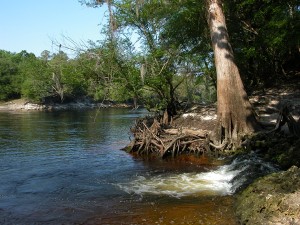Explore the Fascinating Dry Tortugas National Park in Florida
When most people think of Key West, Florida they picture miles of white sand beaches and  endless surf, but there is much more to this destination. The Dry Tortugas National Park offers visitors a wealth of things to see and do, and many wonderful experiences to enjoy.
endless surf, but there is much more to this destination. The Dry Tortugas National Park offers visitors a wealth of things to see and do, and many wonderful experiences to enjoy.
Vacationers on a budget will be pleased to know that the Dry Tortugas National Park can be a very affordable family adventure. The entrance fee to this park is a mere $5, and the park pass is good for a full seven days. In addition Dry Tortugas honors a number of park passes, including Golden Eagle, Golden Access Passport, National Parks Pass and Golden Age.
Camping and Adventure Ft. Pickens State Park Florida
The largest of three military installations to supplement island protection following the War of 1812, Fort Pickens State Park is a true preservation of history, nature, and wildlife. Situated on the western point of Santa Rosa Island in Northwest Florida, this park is an exciting destination for anyone who enjoys historical sites, nature, and fresh air activities. Locals love to visit the park in the off-season from October to April. This destination offers something for everyone from historic armories and battle stations to wildlife and, of course, the 175 year old Fort Pickens itself.
Fort Pickens State Park spans the western seven miles of the island and is home to hundreds of species of wildlife and plants. Inside of the park are trails and boardwalks that are part of the Florida Mountain Bike Trails tour and there are plenty of them to go around. Most trails are accessible by bike and all are accessible by foot totaling 6 miles of hiking or biking enjoyment. Heavy on wildlife, it is not rare to discover all kinds of animals native to the area. Wild herrings, armadillos, and many other creatures populate the park.
Explore the Real Florida at Big Lagoon State Park
Situated along the edge of Big Lagoon, Big Lagoon State Park is nearly 700 acres of  premier land for camping, hiking, fishing, and relaxation in Northwest Florida. This Florida State Park is also the location of some of the most beautiful beaches in the world. White sand and green vegetation are just the beginning of the discoveries waiting at Big Lagoon. As home to the hundreds of plants, birds, marine life, and other wildlife for which the real Florida is famous, this state park is never short on adventure.
premier land for camping, hiking, fishing, and relaxation in Northwest Florida. This Florida State Park is also the location of some of the most beautiful beaches in the world. White sand and green vegetation are just the beginning of the discoveries waiting at Big Lagoon. As home to the hundreds of plants, birds, marine life, and other wildlife for which the real Florida is famous, this state park is never short on adventure.
In the middle of the sights and sounds at Big Lagoon, visitors are well kept in camp sites that include electricity, water, a picnic table, and ground grill. Scattered around the park are large pavilions, benches, and picnic tables placed in perfect position to witness breathtaking views. Among the amenities is the Governor’s Pavilion which features a floor to ceiling stone fireplace and grill at its center. Since the hurricane season of 2004 destroyed much of the parks man-made amenities, everything at this park is virtually new. Wildlife has rebounded and the beaches are clean and renewed.
Okefenokee National Wildlife Refuge
Located in rural south Georgia, the Okefenokee National Wildlife Refuge comprises almost  400,000 acres of swampland and cypress forests. Famed for its wildlife, the park offers some of the most primitive wilderness canoeing in the region.
400,000 acres of swampland and cypress forests. Famed for its wildlife, the park offers some of the most primitive wilderness canoeing in the region.
The Okefenokee Wildlife Refuge boasts a variety of wildlife – over four hundred species, with the alligator being the most sought after sight in the park. Black bears, sand hill cranes, and red cockaded woodpeckers round out the list of animals synonymous with the park.
Way Down Upon the Suwannee River
Florida state parks are a dream for Floridians and Snowbirds. If the roller coaster at  Disney World isn’t your thing, roll down a river with paddle and canoe. North Florida’s Suwannee River Wilderness Trail is 170 miles long. The Suwannee River rises from the Okefenokee Swamp in Fargo, Georga and empties into the Gulf of Mexico in Florida. It’s a black water river, traversing though swamps and wetlands in some places.
Disney World isn’t your thing, roll down a river with paddle and canoe. North Florida’s Suwannee River Wilderness Trail is 170 miles long. The Suwannee River rises from the Okefenokee Swamp in Fargo, Georga and empties into the Gulf of Mexico in Florida. It’s a black water river, traversing though swamps and wetlands in some places.
First time Suwannee River paddlers are awed by its graceful beauty. It’s a slow and lazy paddling experience, not meant to be hurried. The landscape changes at every bend, narrowing and widening with steep limestone cliffs and cool springs for taking a quick dip. Cypress and Pine trees bend over the river. You may see a manatee feeding on plants by the water’s edge or a deer grazing on the riverbank as an alligator emerges. For miles, the paddler could be completely alone with the river’s natural wonders – only the sound of the mocking birds or the buzz of cicadas to interupt the silence. It is the least polluted of the major rivers in the United States thanks to the wetlands that assist in filtering the water.
